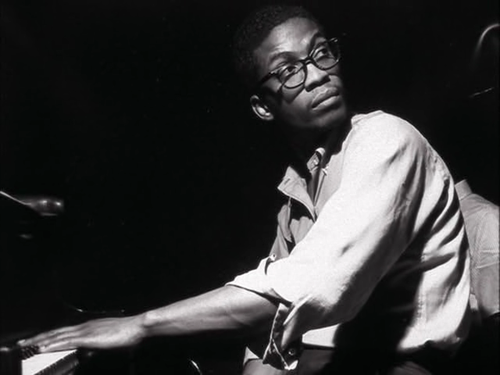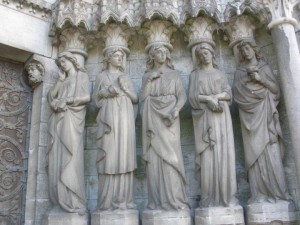I feel obliged to say something, anything, on this sombre occasion.
Fortunately, Sean Beaudoin has done some heavy, eloquent lifting in the service of sanity, healing, and remembrance.
Sean is an outstanding writer. He also happened to grow up in Newtown. I can’t recommend this piece highly enough.
A few especially poignant passages:
Twelve girls, eight boys. Barely seven years old. First graders.
That alone is an essay. It is haiku for loss, without the seven syllables of absolution. There is no pretending horror can be spun into a redemptive cliché.
To lose a child, particularly in a violent manner, is beyond reckoning. Or belief. Or typing a worthy sentence about. When I sat down at my keyboard after a few days of emotionally curling up on the basement floor, I wanted to write something imbued with meaning. I wanted to comfort and inspire and transcend. But I find that I don’t have the words. Or the presumption to even try and conjure them.
What we need, just as much as sane, baseline legislation, is to start seeing these events for what they really are. “Tragedy” suggests infrequence. “Mass shooting” implies a random and unpredictable deed. “Act of a madman” pretends that we bother to identify the mad, let alone spend the money to treat them. “An expression of evil” lets everyone off the hook, as if it were something metaphysical, preordained, or inscrutably Nietzschean. It is exactly the opposite. These incidents are the direct result of institutionalized, heavily funded, and cravenly protected invitations to slaughter.
Much more, here: http://www.theweeklings.com/admin/2013/12/14/newtown-one-year-later/
And what do I have to say for myself, on this occasion? Well, I’ve talked a bit about my fear and loathing of our obsessive and insane gun culture, here: http://bullmurph.com/2009/04/14/ignorance-is-a-warm-gun/.
Today, I’d rather talk about what I do when words fail, when words and even thoughts seem insufficient, even inappropriate, for the scope of sadness and the sufferings of others. Certainly, we have one another; in the end we only have ourselves, and part of what keeps us going is that our good deeds, on balance, outweigh the evil and indifference we tolerate and abet. Many people have various types of faiths, and I certainly endorse any activity that helps more than it hurts (organized religion does not quite make the cut, but at least in times of trouble, Mother Mary comes to enough people that I’ll Let It Be).
For me, it’s music. And while that may seem trite, or even disrespectful to some (music above humanity? Art before God?), to me it’s the ideal amalgamation of all the things we think we’re thinking about when we think about faith in something bigger than ourselves, regardless of whether or not an omnipotent Being is shuffling the deck upstairs in ways that will only make sense once we’re reunited in His eternal company. I’ve written extensively about this topic, HERE and my perspective is more succinctly articulated, below:
My own issues with Faith, Church, God, Religion (etc.) have often been inextricable from my writing, just as they have been inseparable aspects of my life. Why shouldn’t they be? Just because I ceased to wrestle with the metaphysical angst of who we are, what we’re doing here and where we’re going –amongst other concerns– and above all, if there was a big conductor in the sky overseeing the proceedings, does not mean I don’t contemplate the implications. For me; for us all. So, getting that out of the way right up front, I think the following paragraph is a succinct enough distillation of where my head is at in matters of “The Faith Question”:
I visited my mother’s grave the first several years for the same reason I used to attend church: it was expected, it was meant to make me feel better, it was supposed to signify something. I stopped going for the same reasons I ceased attending weekly services. Catharsis by commission most likely satisfies only those who don’t realize the game is rigged, spiritually speaking. Or else, they do know it’s a game and they couldn’t imagine it any other way. (It is not the people with genuine faith the faithless have reservations about; it’s the folks who find their faith so onerous or insufficient that it causes them to act in ways antithetical to the precepts they purportedly approve.)
But let me be clear, I can –and do– appreciate holy places for their aesthetic appeal. I am encouraged –and inspired– by people of genuine faith whose actions speak louder than psalms. I remain in awe of the human works that have been commissioned –or prompted– by the religious imperative. Being in Ireland this Spring involved a steady diet of Guinness, sheep, castles and cathedrals. Both of the pictures above were taken during this journey. It was incredible, and not a little humbling, to behold these mammoth structures that took decades, or centuries, to construct, and withstood the time and tempest of our increasingly insane world. The combination of inconceivable expertise (how, exactly, did these people create hundred-foot statues out of stone without, you know, lasers or at least the same friendly aliens who assisted the Mayans and Egyptians?), patience, craft and, ahem, cheap labor, all combined in the service of something intentionally designed to be bigger than mortality; something intended to span generations bonded by a common belief. Et cetera.
And certainly some of our best composers have been directly moved by the passion and intensity of their faith to create tributes dedicated to a force they can neither prove nor explain. As a dedicated non-musician, I use music (and jazz in particular) as a viable source of empowerment; while it remains first and foremost a very real and easily identifiable source of extreme pleasure; it is also a vehicle, something used to get you someplace else. A stimulus that demands a response, inexorably capable of conjuring up words and concepts (and constructions) such as spirit, soul, God, karma—things that are (rightfully) almost unbearably oblique, or pretentious, or all-too-easily invoked, expedient for folks who ardently need a way to articulate the feeling they either can’t quite explain or desperately wish to get in touch with.
I can –and have– made lists of the myriad songs that have pulled me through; the ones that rise above the ranks and never cease to inspire, console, recalibrate. Anyone who has followed this blog understands there is no shortage of material. But today, for a number of reasons, I think of one artist who has literally made a career out of using his extraordinary abilities to create beauty: Herbie Hancock. In addition to merely being a genius, and one of the seminal American musicians of the last century, virtually everything he has produced is infused with a joy, an awe, a sort of grace combined with humility that keeps the sounds fresh, vital, unequivocally positive. And deep. Hancock is a profoundly peaceful and erudite dude, and that intelligence, humor and drive propels the indefatigable quest he’s been on, and the staggering body of work he’s accumulated since the ’50s (!). (Much more on him, here: HERE). And, of course, the great man just received the Kennedy Center Honors treatment; more on that, here: http://www.washingtonpost.com/entertainment/music/kennedy-center-honors-recipient-herbie-hancock-still-seeking-the-next-sounds/2013/12/05/14683214-5b6b-11e3-a66d-156b463c78aa_story.html
Here then, are a handful of tracks that, for me, are ceaselessly fresh and fertile; they are human answers to unknowable riddles. They achieve what Art, and the humans who create it, is capable of when it is undertaken with the rare combination of honesty and awe: it is the greatness we are in the presence of when we see what is best about ourselves.
First, here he is as part of the greatest band ever assembled (much more on the second Miles Quintet, here: http://bullmurph.com/2010/06/02/five-guys-or-the-greatest-band-of-all-time-no-really/).


